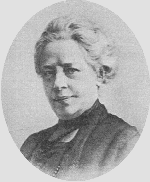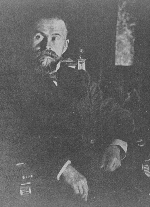BOUHABIB
NEUROCLINIC
Founders
of neurology
DR. CLAUDE BERNARD (1813-1878) Claude Bernarde
of France, early in life came under the influence of Francois Magendie (1783-1855)
who was considered the father of experimental physiology in France. As a student,
Bernarde touched on so many areas in physiology that he was characterized by
Louis Pasteuras "Physiology Itself." From research on the pancreas, the liver,
he moved on to brain lesions with metabolic concomitants. In France he shared
with Johanon Frederick Horner (1831-1886)- credit for describing the so called
Claude Bernarde Horner Syndrome. He did monumental work on the physiology of
smooth muscle
DR.
JOSEPH FRANCOIS FELIX BABINSKI (1857-1932) Babinski, of French descent,
had a thorough training in general medicine before entering the study of neurology.
His bibliography is lengthy beginning with a treatise on typhoid fever (1882)
and ending with a study on hysteria (1930). He worked with the great in neurology
in France to include Charcot, Brissaud, Pierre Marie, Dejerine and others. He
described in 1903 the associated fanning of the toes which would later be termed
Babinski Sign. He also published on cerebrospinal syphilis, cerebellar signs
and symptoms such as asynergia adiadochokinesia, on reflexes, on unilateral
bulbar lesions and dystrophia adiposogenitalia.Babinski anticipated the neurosurgical
era approaching France and of 2 of his favorite students- de Martel and Vincent
he stated "I showed them the way to found French neurosurgery."
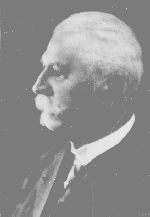
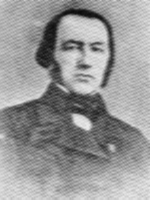
DR.
EDUARD BRISSAUD (1852-1909) Born in France, Brissaud was known as the
neurologistsÆ neurologist although early on he excelled as a neuropathologist.
He was of the school of Jean Martin Charcot (1825-1893) and Charles Lasegue
(1816-1883). He wrote scholarly on contractures in hemiplegia, on the innervation
of the face, on the dissociation between voluntary and mimetic expression, on
the analogy between the faces of those with parkinsonism and others with pseudobulbar
palsy. He wrote expertly on parkinsonism, tics, spasms and on torticollis- each
writing a gem. He even ventured into the field of psychiatry, dwelt on folklore
in medicine, and he advised on asthma. He even developed a reputation as a medicological
expert on conversion hysteria and his expert testimony prompted changes in the
compensation laws of France.
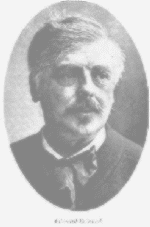
DR.
PAUL BROCA (1824-1880) Early on in life in his native France, at the
tender age of 17 he started his monumental life as a prosector and he eventually
became Secretary of the Societe-Anatomique. As a neurological clinician but
also as a researcher, he wrote effusively- well over 500 presentations (none
ever considered mediocre). A classic 900 page monograph on aneurysms came forth
from his gifted pen and he even experimented with hypnotism on a series of surgical
cases. Even with considerably opposition, he helped introduce the microscope
in the diagnosis of cancer. But he is best known amongst so many other accomplishments
for his contribution to neurology the concept of functional localization by
cerebral convolution. And with his aged father looking on with silent admiration
in a memorable meeting in 1862 he demonstrated the brain lesion of his first
patient who had suffered from aphemie (renamed aphasia later by Armand Trousseau
(1801-1867)). From this presentation and from other ongoing observations he
concluded that the integrity of the left frontal convolution was responsible
and necessary for articular speech (David Ferrier 1843-1928) is responsible
for naming this region "BrocaÆs convolution- the motor speech area.
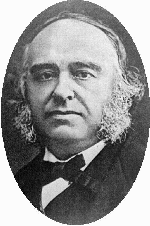
DR.
E. FRIEDRICH BURDACH (1776-1847) This German neurophysiologist in 1837
published a book on microscope anatomy of the nervous system. He named the globus
pallelus (pale moss) and the putamen (shell). He described in detail the fasciculus
gracilis in 1819. He will be remembered as a neuroanatomist with his name associated
as in BurdachÆs fiber, fissure, nucleus, and tract. Finally, he localized vision
in the posterior part of the brain
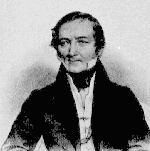
DR.
JEAN MARTIN CHARCOT (1825-1893) In the contribution to neurosciences
by France, this country claims the medical genius of them all. Charcot, whose
brilliance as a clinician and a neuropathologist could never be surpassed. He
created neurology as a firm discipline, made monumental studies in tabes, described,
arthropathies "Charcot Joints", Amyotrophic Lateral Sclerosis, was not only
described but was named by him. His name comes forth as contribution to the
knowledge of poliomyelitis, neuropathies (Charcot-Marie-Tooth) disease, nuiliary
aneurysms, ankle clonus. He even wrote on hysteria, "blessed" hypnotism and
was involved early on in the conflict over animal experimentation. He was a
great teacher and many of his students became the "greats" in neurology.It has
been said that Charcot entered neurology in its infancy and left it at its "coming
of age.

DR.
AUGUSTA MARIE DEJERINE-KLUMPKE (1859-1927) Born in America, she nevertheless
studied medicine in Paris to become the first woman to be named "interne des
hopitaux". She carried on the bulk of his work in private practice and in research
when her husband Joseph Jules Dejerine died in 1917. She is known as a clinician
and a neuropathologist. In 1885 she described the symptomatology of lower brachial
plexus lesions.
DR.
NIKOLAUS FRIEDREICH (1825-1882) Born in Germany and identified as a
great neuropathologist, he also became as a distinguished as a great clinician
in internal medicine with special aptitude in physical diagnosis. One of his
great writings was a monograph on progressive muscular atrophy. Further, his
work on hereditary spinal ataxia is monumental. Standard as a classic also is
his description of paramyoclonus multiplex
DR.
SERGEI KORSAKOV (1853-1900) Korsakov was born in Russia, received most
of his education there, but he studied with Meynert in Vienna. He is universally
known for the disorder which bears his name. Although he studied alcoholic polyneuritis
with mental symptoms, his "KorsakovÆs psychosis" was the term used only when
the mental disorder was accompanied by neuritis symptoms. He wrote on paranoia
(paranoia hyperphantastica) as he described it in his textbook. He classified
psychiatric illnesses. Known as a humanitarian, he improved conditions in mental
institutions. He was the first great psychiatrist in Russia. He is considered
a "moral genius" as were Pinel and Charcot.
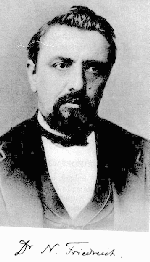
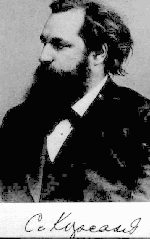
DR.
HERMANN OPPENHEIM (1858-1919) Oppenheim was born in Germany and after
completing medical school showed great interest in physiology and later psychiatry.
He published on tabes dorsalis, bulbar paralysis, lead interaction with associated
neuritis, alcoholism, anterior poliomyelitis, syphilis, multiple sclerosis
and even traumatic neurosis. In 1890 he opened his own center for clinical
neurology. He wrote effusively on brain tumors, syphilis of the brain, coined
the term "dystonia muscular in deformans." He was a great clinical neurologist,
a great diagnostition, but he was also a fine therapist. His description of
amyotonia congenita- or OppenheimÆs Disease is a fitting monument to this
great scientist.

DR.
HANS HEINRICH GEORGE QUECKENSTEDT (1876-1918) Born in Germany, Queckenstedt
studied medicine in Rostock. His special interest in the physics of cerebrospinal
fluid pressure led to his description of the Queckenstedt test for spinal
subarachnoid block. He will be remembered both as a neurologist and a physiologist

DR.
MORITZ HEINRICH ROMBERG (1795-1873) Romberg was born in Germany
educated natively, but at the age of 22 wrote a classic on achondroplosia
(congential rickets). He entered into neurologic studies soon after and
with Peter Frank pioneered the study of the spinal cord. He worked in neuroanatomy
and neuropathology but found the time to write through many editions. He
wroteon diverse subjects such as causalgia, chorea, the convulsive state,
tetary, facial paralysis. He described the classic, the "Romberg" sign and
stated that no ataxic can stand still with eyes shut. Known as a great clinician
he was also a great teacher.
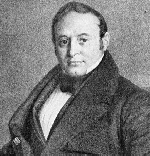
DR.
CARL WERNICKE (1848-1904) Wernicke was born in Tarnovitz, Poland
but his family moved to Germany where he received all his education. Interested
in psychiatry, traditionally he studied anatomy initially and neuropathology
later. He published a small volume on aphasia which vaulted him into international
fame. In it was precise pathoanatomic analysis paralleling the clinical
picture. He is best known for his work on sensory aphasia and poliomyelitis
hemorrhagia superior. Both of these descriptions bear his name. Further,
his books on the disorders of the internal capsule and his textbooks on
diseases of the nervous system perpetuate him.




